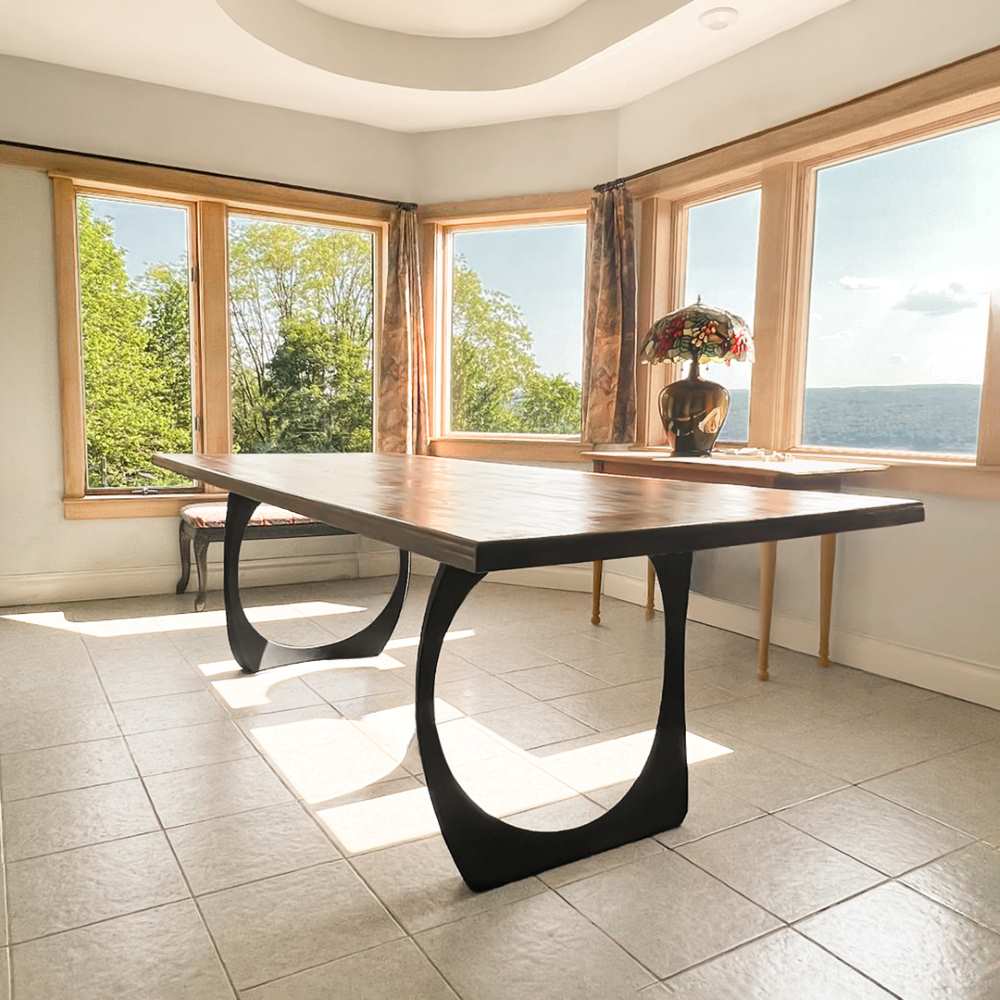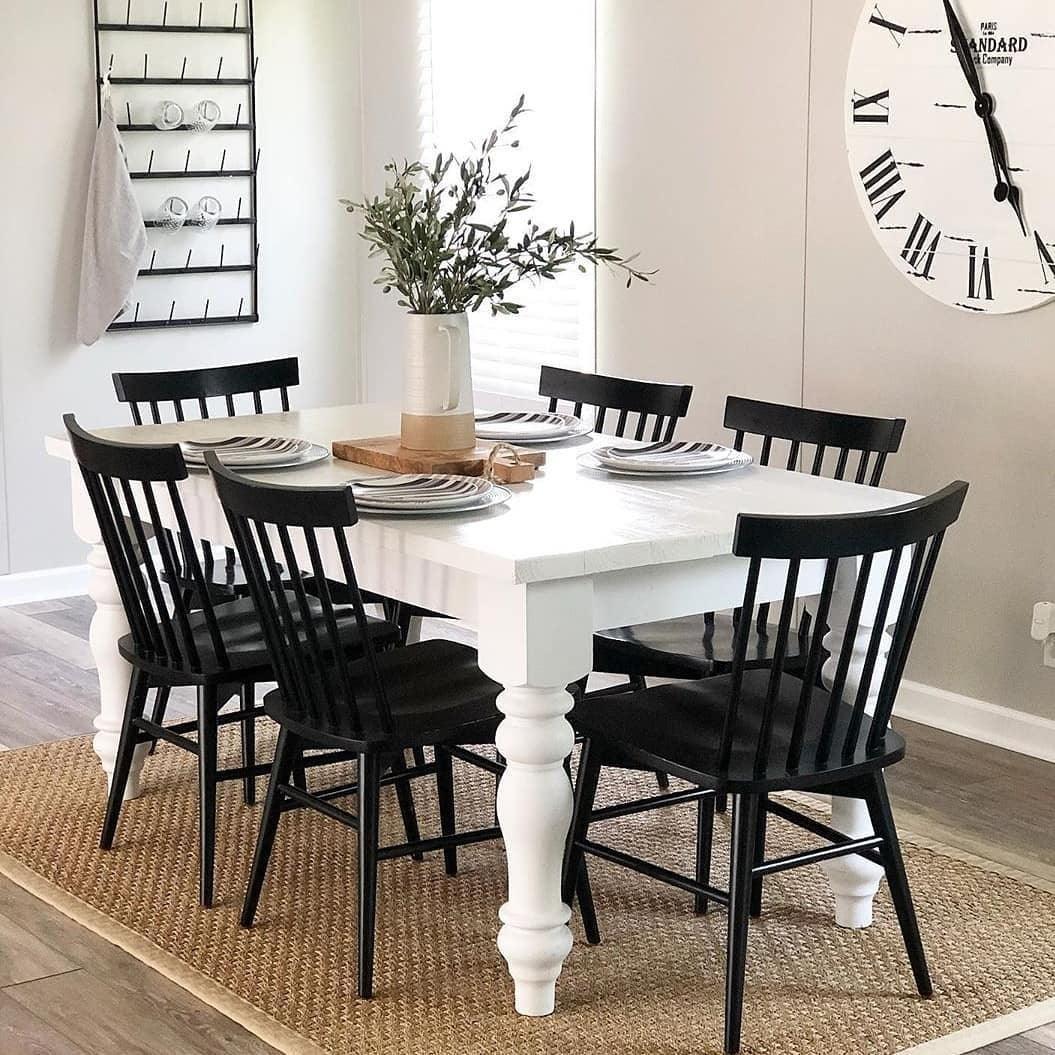Creative Ideas for Replacing or Refurbishing Your Dining Room Table Legs
Creative Ideas for Replacing or Refurbishing Your Dining Room Table Legs
Blog Article
From Conventional to Modern: Discover the Ideal Dining-room Table Legs for Your Design
While timeless designs such as cabriole and transformed legs evoke a feeling of timeless sophistication, modern designs like hairpin and geometric alternatives offer a possibility for striking visual rate of interest. As you take into consideration these aspects, the inquiry stays: just how can you seamlessly integrate these varied leg styles to produce an unified eating experience?
Understanding Table Leg Styles
The selection of dining area table leg styles can substantially influence both the aesthetic appeals and capability of the area. Each leg design contributes unique useful features and visual elements, dealing with diverse layout preferences and use demands. Understanding these styles is vital for selecting the appropriate dining table that lines up with your general interior decoration vision.
For circumstances, conical legs provide a tidy, traditional appearance that can boost a room's beauty, while pedestal bases give stability and optimize legroom, making them optimal for smaller areas. Barrette legs, a characteristic of mid-century modern style, introduce an industrial panache, permitting a ventilated, open feeling. Trestle legs stimulate rustic charm, offering robust support and a sense of eternity.
Additionally, the option of products plays a significant role. Wood legs can bring warmth and appearance, whereas steel alternatives usually share a smooth, contemporary vibe. Ultimately, comprehending table leg designs is crucial for developing a natural eating location that shows individual design while making sure functionality and convenience. By thoughtfully considering these elements, you can enhance both the visual and practical allure of your dining area.
Traditional Table Leg Options
When selecting eating room table legs, typical choices frequently symbolize timeless elegance and craftsmanship. These styles mirror a rich heritage and a dedication to quality, making them ideal for those who appreciate timeless looks.
One of the most famous conventional leg designs is the cabriole leg, characterized by its stylish rounded shape. This layout usually features decorative carvings and is most commonly found in Queen Anne and Chippendale furniture. Another popular option is the transformed leg, which flaunts a collection of smooth, rounded forms that supply a traditional appearance while preserving stability.
Additionally, the straight leg, while easy, provides a unadorned and tough framework that can mix effortlessly with a range of tabletop styles. For those drawn to ornate describing, claw-and-ball feet legs stimulate a sense of splendour and can function as a stunning prime focus in any kind of eating area.
Lastly, stand bases, although not purely legs, supply an alternate traditional alternative that permits for adequate legroom and can be magnificently carved. Each of these typical leg designs adds to the total atmosphere of a dining-room, weding function with visual charm.

Modern Table Leg Styles
Modern table leg designs supply a diverse array of styles that stress innovative materials and clean lines. These layouts frequently prioritize capability while acting as striking focal factors within a dining area. Minimalist appearances are common, with legs crafted from products such as metal, glass, and crafted timber, which add to a contemporary and ventilated feeling.
One prominent layout is the hairpin leg, defined by its slim, tapered framework that gives stability without frustrating the table top (dining room table legs). This style is commonly found in mid-century contemporary check here furnishings and can easily complement different eating table forms. Another pattern is using geometric forms, where legs may handle unbalanced or angular forms, adding aesthetic passion and a touch of virtuosity

Mixing Styles for Distinct Spaces
Typically, property owners look for to produce one-of-a-kind dining areas that show their personal design by mixing different design elements. This approach permits the unification of varied looks, leading to a harmonious yet distinctive setting. For circumstances, matching a rustic wooden table with streamlined, contemporary metal legs can develop a distinctive comparison that elevates the area's general appeal.
Furthermore, incorporating vintage table legs with contemporary tabletops can stimulate a sense of background while maintaining a modern-day sensibility. Such mixes not only display private preference however additionally motivate creative thinking, enabling homeowners to curate an area that feels both personal and welcoming.
Color plays a crucial function in this mixing process; choosing table legs that complement or contrast with the existing color design can improve visual rate of interest. Whitewashed legs can soften the daring of a dark table surface, producing a well balanced aesthetic.
Tips for Selecting the Right Legs
Picking the right table legs is important for accomplishing both capability and aesthetic charm in your eating room. Begin by considering the general design of your area. Conventional settings take advantage of legs that include detailed carvings or turned layouts, while contemporary areas might ask for sleek, minimalist styles.
Following, analyze the elevation and stability of the legs. dining room table legs. Conventional eating tables vary in between 28 to 30 inches in elevation, so ensure the legs enhance this measurement for comfort. Furthermore, robust check out here materials, such as hardwood or metal, can improve security and long life
Review the leg form too-- alternatives consist of straight, tapered, or stand layouts. Straight legs offer a classic look, while tapered legs can add a touch of elegance. Pedestal bases provide ample legroom and are optimal for smaller areas.
Final Thought
In summary, selecting the excellent eating room table legs calls for cautious consideration of both modern and typical styles. By harmonizing leg style, elevation, and material with the general décor, a cohesive and welcoming atmosphere can be attained.
The selection of dining area table leg styles can significantly affect both the looks and functionality of the room. Eventually, understanding table leg styles is necessary for creating a natural dining location that reflects personal design while guaranteeing usefulness and comfort.One of the most famous traditional leg designs is the cabriole leg, identified by its stylish bent shape. Straight legs provide a timeless look, while conical legs can include a touch of elegance.In recap, picking the perfect eating area table legs requires cautious factor to consider of both modern-day and conventional designs.
Report this page